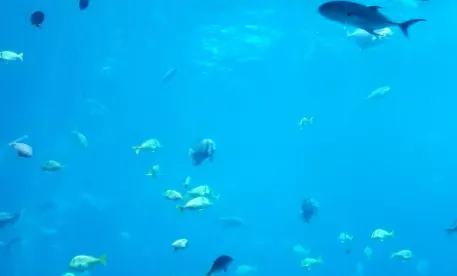The Trump administration recently announced two major actions to assist the U.S. commercial fishing industry. President Trump’s Executive Order on Promoting American Seafood Competitiveness and Economic Growth[1] (Order) aims to increase seafood production by streamlining regulatory permitting processes and reducing burdens on the fishing industry.
In a separate action, the Secretary of Commerce detailed how $300M in CARES Act[2] funding intended to address impacts to the seafood industry caused by COVID-19 will be distributed.
This alert outlines the impacts of the Order on U.S. fishing, as well as describes the initial details for distribution of CARES Act funds to fishing businesses.
Impacts of the Executive Order on U.S. Fishing
While the Order focuses mainly on aquaculture, it also contains several provisions aimed at assisting the U.S. fishing industry. However, important details remain to be worked out, and it is unclear how quickly the fishing industry will see benefits.
The Order requires the Secretary of Commerce to request that each Regional Fishery Management Council submit a prioritized list of recommended actions to reduce burdens on domestic fishing and increase production within sustainable fisheries. These recommendations must be submitted within 180 days of the Order, or by early October 2020. After evaluating those recommendations, the Secretary of Commerce will determine whether to urge the prioritization of those actions in the Trump administration’s regulatory agenda. The Order also directs the Secretary of Commerce to “provide administrative and technical support” to the Regional Councils to carry out this provision.
Next, the Secretary of Commerce must propose regulations to further implement the United Nations Food and Agriculture Organization Agreement on Port State Measures to Prevent, Deter, and Eliminate Illegal, Unreported, and Unregulated (IUU) Fishing (the Port State Measures Agreement). The goal of the Port State Measures Agreement is to close the world’s ports to IUU vessels and prevent illegal catch from entering international commerce. While the United States already has measures in place that comport with many requirements of the Port State Measures Agreement, the Order requires formal adoption of additional regulatory measures.
The Order also includes policy directives that instruct the Departments of State, Commerce, and Homeland Security, as well has other appropriate agencies, to cooperatively work with the public, private, and international sectors to improve the effectiveness of fisheries law enforcement. The Departments of Commerce, Health and Human Services, and Homeland Security are further instructed to prioritize training and technical assistance in key geographic areas to promote sustainable fisheries management; strengthen existing enforcement capabilities to combat IUU fishing; and to implement the Port State Measures Agreement.
Finally, the Order mandates the establishment of an Interagency Seafood Trade Task Force. The Task Force must provide recommendations to the Office of the United States Trade Representative for a comprehensive interagency seafood trade strategy that identifies opportunities to improve access to foreign markets, resolves technical barriers to U.S. seafood exports, and otherwise supports fair market access for U.S. seafood products.
CARES Act Allocation of $300M to Seafood Sector
Detailed guidance on the distribution of $300M allocation of CARES Act funds for fishery participants is still forthcoming; however, the Secretary of Commerce has provided an initial outline of the process.
NOAA has determined the available amount of funds for each of some 30 coastal states, territories, and tribes, which range from $1M each for Mariana Islands and Delaware to $50M each for Alaska and Washington. The funds will be distributed by the Atlantic States Marine Fisheries Commission, Pacific States Marine Fisheries Commission, and Gulf States Marine Fisheries Commission, in consultation with relevant state agencies, tribes, and territories. Each applicable state agency, tribe, or territory will be charged with developing a spending plan for their jurisdiction to be reviewed by the Commissions.
Fishery participants eligible for funding include commercial fishing businesses, processors, qualified aquaculture operations, tribes, charter/for-hire fishing businesses, fishing communities, and fishery-related businesses (other than those farther down the supply chain such as vessel repair businesses, restaurants, or seafood retailers) that can demonstrate a 35 percent reduction in revenues attributable to the COVID-19 pandemic as compared to the prior five-year average revenues, or any negative impacts to subsistence, cultural, or ceremonial fisheries.
NOTES
[1] Exec. Order 13921, 85 Fed. Reg. 28,471 (May 12, 2020), https://www.federalregister.gov/documents/2020/05/12/2020-10315/promoting-american-seafood-competitiveness-and-economic-growth.
[2] Coronavirus Aid, Relief, and Economic Security Act, Pub. L. No. 116-136, § 12005, 134 Stat. 281 (2020).








 />i
/>i

